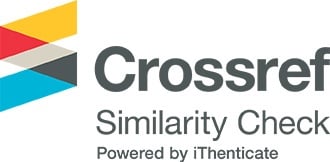Molecular docking study of anticancer activity of some s-triazine derivatives as HDAC6 inhibitors
Các tác giả
DOI: https://doi.org/10.59294/HIUJS.VOL.5.2023.543Từ khóa:
triazin, kháng ung thư, in silico, docking phân tử, HDAC6Tóm tắt
A novel series of s-triazine derivatives was designed and screened for in silico anticancer activity in histone deacetylase 6 (HDAC6) target by molecular docking method using AutoDock Vina. Compound 12 showed the strongest interactions among all tested compounds with the affinity value of -11.3 Kcal/mol compared to the reference drugs Gedatolisib (-8.9 Kcal/mol) and Paclitaxel (-9.0 Kcal/mol) at the active site of HDAC6. In particular, compound 12 established strong hydrogen bonds and showed hydrophobic interactions that resemble Gedatolisib and Paclitaxel at amino acids such as SER150, LYS142, TRP261, and ALA145. Therefore, this compound could be a potential lead molecule and support for experimental testing against an HDAC6 enzyme as an anticancer agent.
Abstract
A novel series of s-triazine derivatives was designed and screened for in silico anticancer activity in histone deacetylase 6 (HDAC6) target by molecular docking method using AutoDock Vina. Compound 12 showed the strongest interactions among all tested compounds with the affinity value of -11.3 Kcal/mol compared to the reference drugs Gedatolisib (-8.9 Kcal/mol) and Paclitaxel (-9.0 Kcal/mol) at the active site of HDAC6. In particular, compound 12 established strong hydrogen bonds and showed hydrophobic interactions that resemble Gedatolisib and Paclitaxel at amino acids such as SER150, LYS142, TRP261, and ALA145. Therefore, this compound could be a potential lead molecule and support for experimental testing against an HDAC6 enzyme as an anticancer agent.
Tài liệu tham khảo
[1] P. Singla, V. Luxami, and K. Paul, “Triazine-benzimidazole hybrids: anticancer activity, DNA interaction and dihydrofolate reductase inhibitors,” Bioorg Med Chem., vol. 23(8), pp. 1691-1700, 2015.
DOI: https://doi.org/10.1016/j.bmc.2015.03.012[2] G. I. Aldana-Masangkay and K. M. Sakamoto, “The role of HDAC6 in cancer,” J. Biomed Biotechnol., vol. 2011, p. 875824, 2011.
DOI: https://doi.org/10.1155/2011/875824[3] P. C. Em, L. T. Tuong Vi, L. H. Huong Ha, V. T. Bich Ngoc, B. V. Long, V. T. Thao, D. V. Duy, T. N. Ngoc Vi, N. L. Bao Khanh and N. T. Tuyen, “N,2,6-Trisubstituted 1H-benzimidazole derivatives as a new scaffold of antimicrobial and anticancer agents: Design, synthesis, in vitro evaluation, and in silico studies,” RSC Adv., vol. 13(1), pp. 399-420, 2023. DOI: 10.1039/d2ra06667j.
DOI: https://doi.org/10.1039/D2RA06667J[4] P. C. Em, L. T. Tuong Vi and N. T. Tuyen, “Design, synthesis, bio-evaluation, and in silico studies of some N-substituted 6-(chloro/nitro)-1H-benzimidazole derivatives as antimicrobial and anticancer agents,” RSC Adv., vol. 12(33), pp. 21621-21646, 2022. DOI: 10.1039/d2ra03491c.
DOI: https://doi.org/10.1039/D2RA03491C[5] E. C. Pham, T. N. Truong, N. H. Dong, D. D. Vo and T. T. Hong Do, “Synthesis of a series of novel 2-amino-5-substituted 1,3,4-oxadiazole and 1,3,4-thiadiazole derivatives as potential anticancer, antifungal and antibacterial agents”, Med. Chem., vol. 18, pp. 558 - 573, 2022. DOI: 10.2174/1573406417666210803170637.
DOI: https://doi.org/10.2174/1573406417666210803170637[6] P. C. Em, L. T. Tuong Vi, T. P. Long, T. N. Huong-Giang, N. L. Bao Khanh and N. T. Tuyen, “Design, synthesis, antimicrobial evaluations and in silico studies of novel pyrazol-5(4H)-one and 1H-pyrazol-5-ol derivatives,” Arab. J. Chem., vol. 15(3), p. 103682, 2022. DOI: 10.1016/j.arabjc.2021.103682.
DOI: https://doi.org/10.1016/j.arabjc.2021.103682[7] P. C. Em and N. T. Tuyen, “Design, microwave-assisted synthesis, antimicrobial and anticancer evaluation, and in silico studies of some 2-naphthamide derivatives as DHFR and VEGFR-2 Inhibitors,” ACS Omega., vol. 7(37), pp. 33614-33628, 2022. DOI: 10.1021/acsomega.2c05206.
DOI: https://doi.org/10.1021/acsomega.2c05206Tải xuống
Tải xuống: 211











